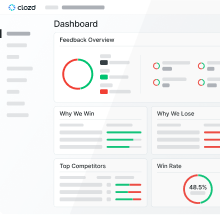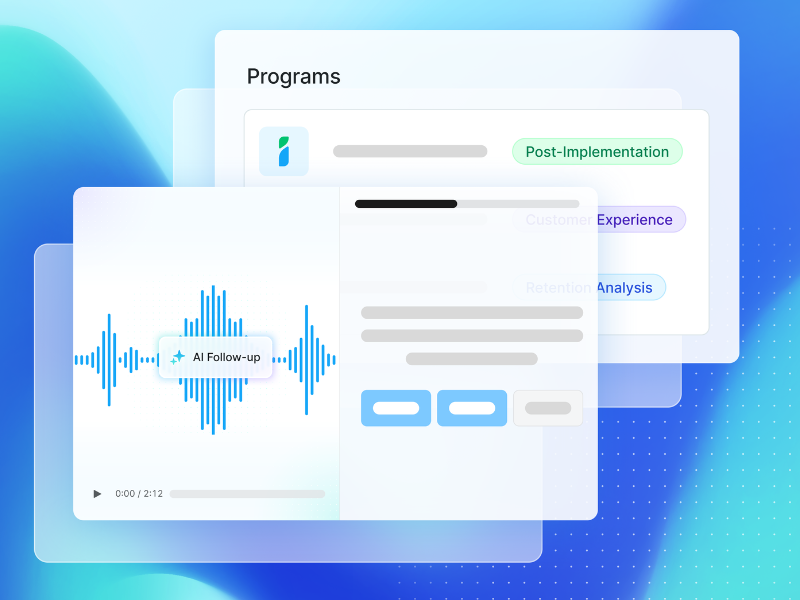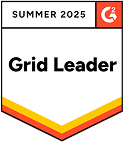
Win-Loss Analysis: Who are you going to interview?
One of the most important tasks you will encounter during the process of setting up your win-loss program is determining who you will interview and getting their contact information. It sounds easy, right? Many win-loss program sponsors think so at first, but quickly find that recruiting the right number and mix of interviewees is an uphill battle.
In our experience, preparing lists of interview contacts is consistently the biggest bottleneck to the completion of a win-loss program. Internal departmental red-tape, insufficient CRM data, and a lack of shared understanding of the purpose of your win-loss program can all pose challenges. Despite this, investing sufficient time into curating a solid interviewee list can pay great dividends. The people you interview are arguably more important to getting the information you need than the questions you ask or the person conducting the interviews.
These people hold the information you need to get to the heart of the question: Why do you win and lose?
Step 1: Clarify your learning objectives.
Before going to your CRM to pull a list of interviewees, it is worth taking a step back to consider why you are conducting your win-loss program in the first place. The overarching question you are trying to answer is “why do you win and lose?”, but the most effective win-loss programs are often much more targeted. Some more specific questions to consider are:
- Why are we winning and losing against competitor X?
- Why are we winning and losing with a certain segment of customers (i.e. companies in a specific industry or geography).
- Why are we winning small deals, but not big deals?
Once you have a clear picture of the specific question(s) you are trying to answer, everything that follows will be much easier.
Step 2: Determine which customers to target.
Now that you have a clear picture of what you want to know, the next step is determining which sample of your customer base is best equipped to provide you with the information you need.
Here are a few questions to consider:
What is the size and age of your overall sales pipeline?
If you have 1,000 deals come through your pipeline every quarter, blindly interviewing 20-30 deals in that quarter won’t come anywhere near representing your overall pipeline and will likely produce mixed results. Instead, think about a subsegment of deals you can pursue. Likewise, if you have much smaller deal volume, then 20-30 interviewed deals per quarter may do a sufficient job of representing your entire pipeline. Also, it’s best not to interview deals that have closed more than 3-4 months prior to the anticipated interview date.
Do we want to do win-loss or churn interviews?
This question relates directly to the strategic questions you are trying to answer through your win-loss program. Ultimately, the answer depends on whether you are more concerned with your win rates or churn rates.
Should we conduct blind or non-blind interviews?
There are pros and cons to each of these approaches. Blind interviews typically provide valuable high-level competitive insights whereas non-blind interviews are more targeted and often generate more concrete, actionable feedback. For more on this topic, read our blog post about how to determine whether blind or non-blind interviews are best for your program.
What position and industry am I targeting?
People in certain industries are more likely to participate than individuals in other industries. Also, the higher the position of the interviewee in their company, the less likely they are to participate.
What percent of customers will participate?
This is a complicated question and the answer depends on some of the other questions we have already considered. Interview participation rates will vary by industry, interviewee profile (i.e., job title, experience level, seniority, etc.), transaction size, etc. Although participation rates vary widely, based on such variables, some general guidelines are:
- Blind Interviews: 5% - 15%
- Non-Blind Interviews: 20% - 40%
- Wins (non-blind): 30% - 40%
- Losses (non-blind): 20% - 30%
- Churns (non-blind): 25% - 35%
With these figures in mind, it is a good rule of thumb to collect 3x - 5x as many names as you will actually need and then prioritize those names according to which deals you believe will offer the most valuable feedback and strategic insight.
Step 3: Coordinate internally to pull and approve the list.
Now that you have determined what question you are trying to answer and the kinds of customers you should target, the next step is to actually get the list. The nuts and bolts of pulling a list from your CRM typically isn’t very hard. If you have trouble, then your CRM administrator should be able to help you. The challenge comes in navigating the roadblocks you may face in getting the necessary permissions to source and approve these lists. There are several business functions you may need to collaborate with, including sales, sales operations, product management, product marketing, etc. Sales is likely the function that you will most commonly be working with in this endeavor, but best practices for working with other functions will be very similar.
The sales organization can be your biggest ally or your biggest detractor in the execution of your company’s win-loss program. If you have the sales team on your side, you’ll be on the fast track to executing an insightful win-loss program. If you don’t, your win-loss program may never get off the ground. This critical partnership is worth taking the time to handle well. When you communicate to the sales team, as with other functions, it is best to be as proactive as possible. The last thing you want is to start conducting win-loss interviews with potential buyers and then get a bunch of angry emails from sales representatives asking why you are talking to their customers without their knowledge. You might consider drafting an email similar to the following:
Hello <insert name of sales leader>,
We’re looking to conduct several informational interviews with prospective buyers from our won and lost deals. We’re doing this so we can better understand the core reasons why we win and lose sales, and then use the feedback to help us win more. We’ve been doing some research on organizations that conduct programs like this and it is common for rigorous, focused win-loss programs to drive at least a 10% improvement in sales win rates. We’re specifically looking to interview deals that <insert key criteria for interviewees>.
To do this, we’re going to need to pull names from <insert name of CRM - i.e. Salesforce.com, SAP, Oracle, Microsoft Dynamics, etc.> that meet these criteria. After I pull the list, I might be reaching out to ask you more about the names we pull so you can weigh in on which deals we think we should prioritize in this list. We want to interview prospective buyers from deals that are likely to offer us the most valuable feedback and I genuinely believe this feedback will help your team win more deals. I know this is a new program, so if you have any questions, please don’t hesitate to reach out.
When you send an email like this, as with other communication to the sales team, be careful not to give them too much license to remove names from the list. Salespeople will naturally NOT want you to interview deals that didn’t go well or that might paint them in an unfavorable light.
If these concerns come up, reassure them that this program is not a witch-hunt. The goal isn’t to find isolated sales performance issues, but rather to find recurring themes and trends across interviews that the company can work together to address. You might want to add a line in subsequent email communication saying something like, “We’ve pulled a list of names for our win-loss interviews that contains a few of your recent deals, if there is anyone specific that you’d like us to remove, you have until X date to let us know.” This approach allows them to remove names from the list if there are deals that are still in process that were marked closed or that have another good reason for being removed from the list. The most important aspect of all this communication is to try to get the sales team, or any other function that you need to collaborate with, excited about your win-loss program. Lead with the benefits of win-loss and continually push the message that the program is meant to help your company win more sales, which will ultimately benefit everyone in the company.
More Best Practices
For a comprehensive guide to win-loss best practices and strategies, download our free guide:
Clozd’s Definitive Guide to Win-Loss Analysis












.svg)



.jpg)






.svg)

.svg)




